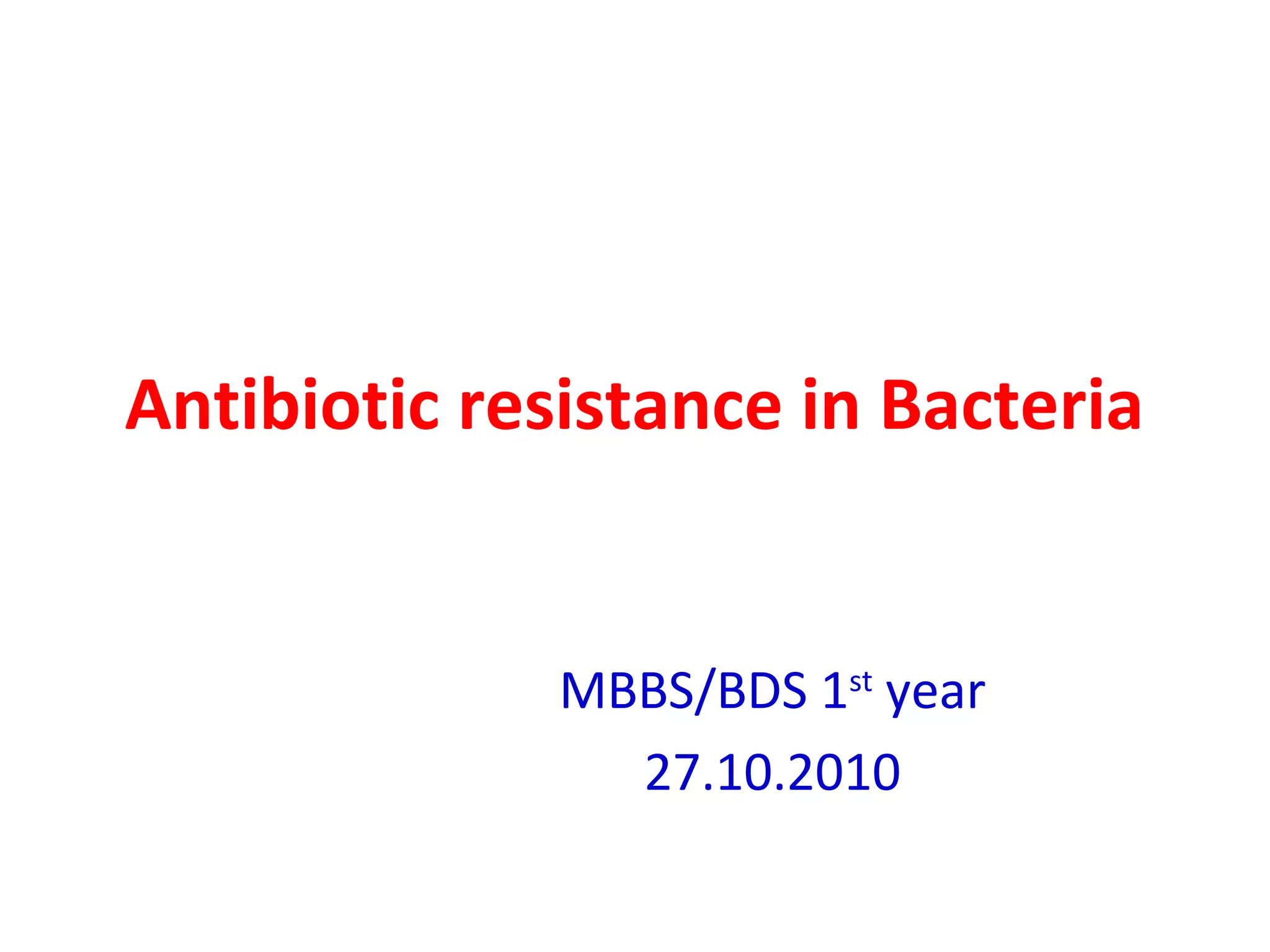Antibiotic resistance in bacteria is a major challenge for the long-term use of antimicrobial agents. Bacteria can develop resistance through intrinsic or acquired mechanisms such as mutations or gaining new DNA. Resistance occurs through various methods like altering the antibiotic target, reducing drug accumulation in bacteria, or enzymatically inactivating the drug. Prudent antibiotic use and infection control practices can help limit the emergence and spread of drug-resistant bacteria.































